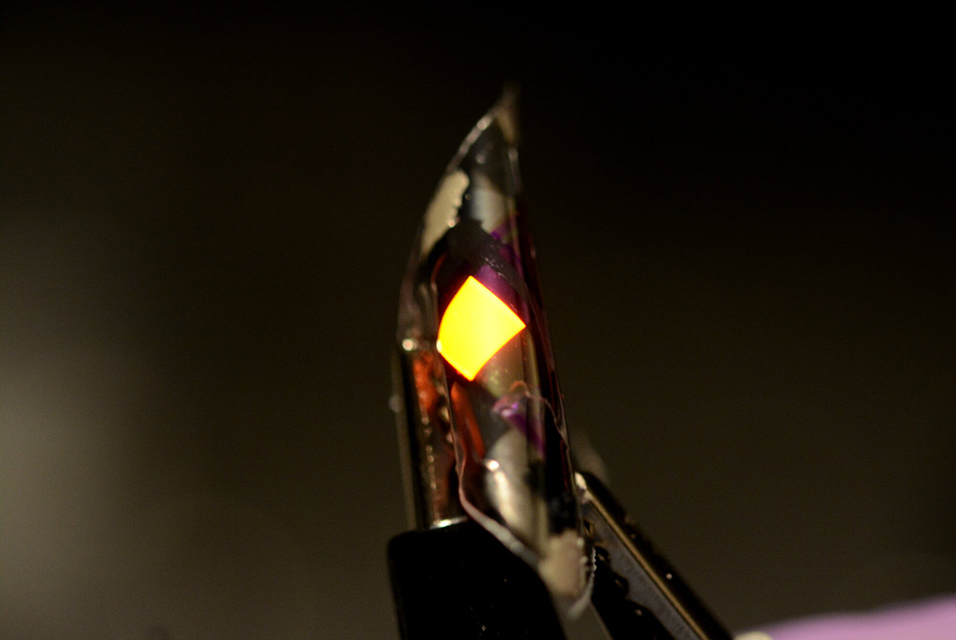ST ANDREWS.- Researchers at the
University of St Andrews, working with colleagues at the University of Cologne, have discovered a way of coupling light and matter to ensure optimum brightness and color of the latest TVs and smart screen displays without sacrificing the device's efficiency.
Lead investigator Professor Malte Gather, of the University of St Andrews School of Physics and Astronomy, a member of the Scottish Universities Physics Alliance (SUPA), explained, "Displays made of organic light-emitting diodes (OLEDs) have long entered the consumer market on all scales—from large TVs to high-resolution smartphone screens.
"However, as the display industry prepares for the next generation of devices with even higher color saturation, brightness and efficiency, scientists are facing several challenges. Inherently, organic light emitters show broad emission spectra due to their intrinsic disorder—a property that limits the available color space and color saturation for high-end displays.
"The emission spectra of OLEDs can be adjusted by the use of color filters or optical cavities, but this either comes at the cost of efficiency or leads to a strong dependence of the perceived color on viewing angle."
The researchers have now demonstrated that a fundamental scientific principle—the strong coupling of light and matter—can be utilized to modify the emission spectra of OLEDs in a manner similar to the use of a microcavity, but without inheriting the strong viewing angle dependence that typically accompanies such designs.
Professor Gather said that by placing the OLED stack between thin mirrors made from metallic materials already widely used in the display industry, the coupling between light and the organic material can be significantly enhanced. However, this coupling would typically lead to reduced device efficiency.
To avoid this, the researchers added a separate thin film of strongly light-absorbing molecules, something one would usually find in organic solar cells but so far not in OLEDs. This additional layer maximized the strong-coupling effect and thus created a hybrid light-matter particle, referred to as polariton, but crucially without substantially reducing the efficiency of the light-emitting molecules in the OLED.
Dr. Andreas Mischok, the first author of the present study, added, "Through the creation of polaritons, we are able to inherit some advantageous properties of matter, including their significantly reduced angular dependence."
While there have been reports on polariton-based OLEDs in the past, they have been plagued by very low efficiency and brightness, which has hindered any real-world applications and kept them confined to the world of fundamental research. With the new strategy, the team has now been able to realize polariton-based OLEDs with application-relevant efficiency and brightness for the first time.
Professor Gather added, "With a performance in the same range as OLEDs used in commercial displays, but with much-improved color purity and color stability under varying view angles, our polariton-based OLEDs could be of great value to the display industry."
In addition to being of interest for next-generation displays, the on-demand and efficient creation of large numbers of polaritons can be utilized for a multitude of applications from lasers to quantum computing.
The study is published in the journal Nature Photonics.









